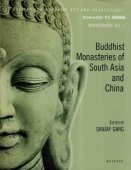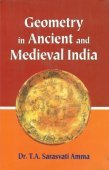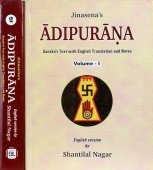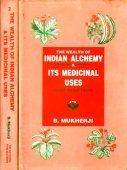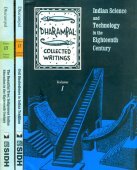Punjab: 2 definitions
Introduction:
Punjab means something in the history of ancient India, Hindi. If you want to know the exact meaning, history, etymology or English translation of this term then check out the descriptions on this page. Add your comment or reference to a book if you want to contribute to this summary article.
India history and geography
Source: archive.org: Cunningham’s Ancient Geography of IndiaPunjab according to Xuanzang (Hwen Thsang).—In the Panjab (Punjab) proper the hilly districts of Taxila, Singhapura, Urasa, Punach, and Rajaori, were subject to the Raja of Kashmir; while the whole of the plains, including Multan and Shorkot, were dependent on the ruler of Taki, or Sangala, near Lahor.

The history of India traces the identification of countries, villages, towns and other regions of India, as well as mythology, zoology, royal dynasties, rulers, tribes, local festivities and traditions and regional languages. Ancient India enjoyed religious freedom and encourages the path of Dharma, a concept common to Buddhism, Hinduism, and Jainism.
Languages of India and abroad
Hindi dictionary
Source: DDSA: A practical Hindi-English dictionaryPunjab in Hindi refers in English to:—(nm) a northern state of the Indian Union; the erstwhile land of the five rivers (viz. [sataluja, vyasa, ravi, canaba, jehalama); ~bi] the language of the Panjab; an inhabitant of the Panjab; pertaining to the Panjab..—punjab (पंजाब) is alternatively transliterated as Paṃjāba.
...
See also (Relevant definitions)
Starts with: Punjab fig.
Full-text (+88): Bahika, Sarasvata, Vitasta, Takshashila, Aratta, Pancanada, Shatadru, Punjab fig, Jalandhara, Uttarapatha, Yaudheya, Vipash, Carissa opaca, Panjabi, Shaka, Kekaya, Sharadam, Maheshasamhita, Amoghabhuti, Paroshni.
Relevant text
Search found 71 books and stories containing Punjab; (plurals include: Punjabs). You can also click to the full overview containing English textual excerpts. Below are direct links for the most relevant articles:
Impact of Sikhism on Indian Society < [October – December, 1999]
Who’s Who Among Our Contributors < [October – December, 1999]
Books and Authors < [April – June, 1997]
Rivers in Ancient India (study) (by Archana Sarma)
10. The river Puruṣṇī or Ravi or Irāvatī and its present status < [Chapter 6 - Changing trends of the Rivers from Vedic to Purāṇic Age]
6. The river Vipāṭ (Beas) and the Śutudrī (Sutlej) and its present status < [Chapter 6 - Changing trends of the Rivers from Vedic to Purāṇic Age]
3. Historical Facts of the river Sarasvatī < [Chapter 6 - Changing trends of the Rivers from Vedic to Purāṇic Age]
Parables of Rama (by Swami Rama Tirtha)
Story 189 - Maharaja Ranjit Singh-Lion of Punjab < [Chapter XXXIII - Will-force]
Story 68 - Mad in Love < [Chapter IX - Love]
Story 234 - The forgetful barber < [Chapter XLIV - Knowledge]
Indian Medicinal Plants (by Kanhoba Ranchoddas Kirtikar)
Introduction, part 4: Modern medicinal works
Notes on the elementary (cardinal) properties of medicines
74. Farsetia Jacquemontii, H.f. and T. < [Brassicaceae or Cruciferae (mustards family)]
Kavyamimamsa of Rajasekhara (Study) (by Debabrata Barai)
Part 8.7 - The region of Uttarāpatha (northern part) < [Chapter 5 - Analyasis and Interpretations of the Kāvyamīmāṃsā]
Part 8 - Rājaśekhara’s divisions of Geographical regions and Seasons < [Chapter 5 - Analyasis and Interpretations of the Kāvyamīmāṃsā]
Appendix 2 - Identification of Geographical names mentioned in the Kāvyamīmāṃsā
Rasa Jala Nidhi, vol 3: Metals, Gems and other substances (by Bhudeb Mookerjee)
Part 2 - Lavana (2): Saindhava (rock-salt) < [Chapter XXIX - Lavana (salts)]
Introduction to Salts (lavana)
Part 3 - Alkaline substance (3): Svarji-kshara (refined natron) < [Chapter XXVIII - Kshara (akalis)]
Related products

